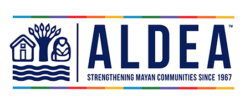Community Life:

- Panatzan was founded 80 years ago by four Maya Kaqchikel families. Now, the village has grown to include a mixture of 235 Ladino and indigenous Kaqchikel families. Spanish is the dominant language in the community, though the Kaqchikel families retain and use their native language.
- The community grew very quickly during the first 50 years. It was common to find families with 8-12 members, but many of the children and women died because of poor conditions and lack of access to resources.
- The village is located almost 21 miles from the county seat of Santa Apolonia.
- The first infrastructure built in the community was a classroom. Currently, the primary school in Panatzan offers education from pre-school through sixth grade.
- Panatzan’s name means “place of salt” in Kaqchikel, and it was named for the springs with salty water in the village.
- There is a one room health center in Panatzan that is staffed once a month by a government healthcare worker. Otherwise, for medical attention people need to travel to Santa Apolonia, San José Poaquil or Paquip, Tecpán. The community has access to public transportation only on market days; otherwise they use private motorcycles or pickup trucks.
- Water access was not a problem initially, because water from the nearby Ujil River was clean, but the river has been contaminated by the other communities upstream. Unfortunately many families still rely on the river as their primary water source. Some families have artesian wells but in the dry season water is not enough to meet their needs, especially with the drought problems in the last few years.
- The community has had electricity service for 18 years.
- Panatzan is located at a lower elevation, thereby changing the nature of the agricultural production than we are accustomed to seeing in the highlands. Bananas, coffee, and sugar cane are the primary agricultural products in this area. Most community members work in sugar cane farms, with an exhausting seven day a week workweek, earning less than $4 per day. Families also engage in subsistence agriculture, producing corn and beans for their own consumption, without a surplus that they can sell.
Our Partnership:
We began working with Panatzan in July 2015 and completed our direct programs together in June 2017.
Integrated Approach to Development: Panatzan’s Progress to Date
- Community Mobilization and Empowerment: Complete
- Nutrition: Complete
- Water, Sanitation & Hygiene: Complete
- Food Security (Sustainable Agriculture): Complete
- Family Planning: Complete
- Disaster Risk Reduction: Complete
See more about how we work in our partner communities
Community Perspective:
“ABPD/ALDEA is taking the approach that the community expected by seeking to improve the knowledge of families, so they can live healthier and more knowledgeable. For years families have struggled with children not gaining weight, and in addition to that the climate change conditions have affected the availability of food. But thanks to ABPD/ALDEA’s intervention through the educational talks and support with different activities, like delivery of seeds and goats, we have seen many improvements for families. This is why I will complete the entire training process—I am aware of the impact on the future of my family and the whole community.”
– Olga Liliana Vielman, 35 (August 2015)
